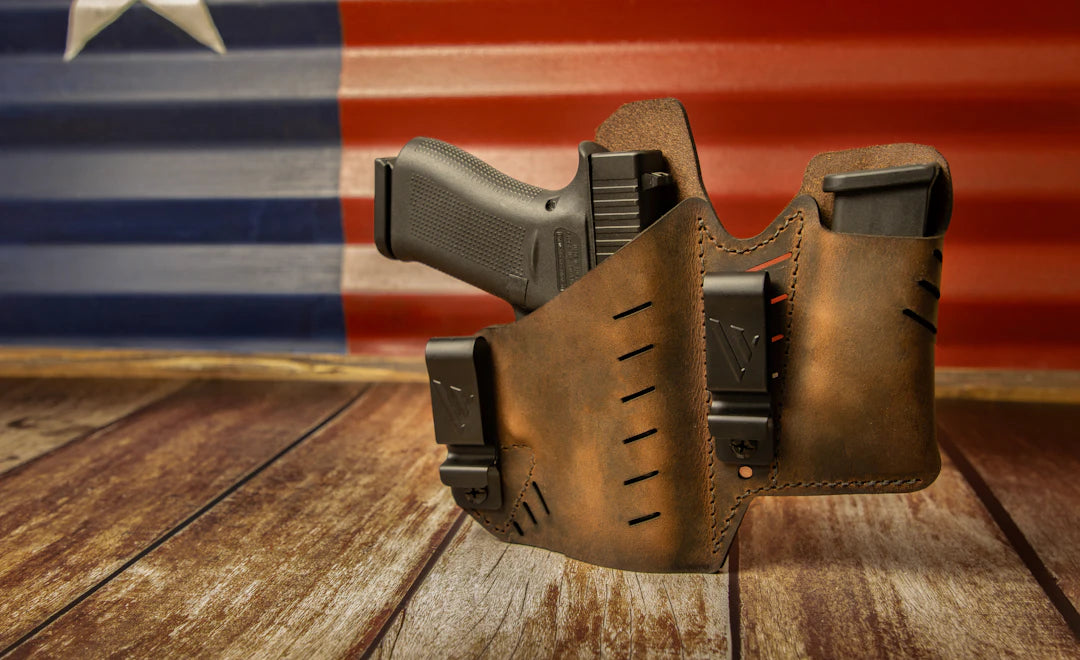Building a comprehensive gun holster collection can be an exciting journey for enthusiasts and everyday carriers alike. Whether you’re a seasoned shooter or just exploring the world of firearms, understanding the various types of holsters available can significantly enhance your shooting experience. In this guide, we’ll explore the essentials of gun holsters, their different styles including the popular Paddle Holster, and how to gradually develop your very own collection.
The Basics of Holsters: What You Need to Know
Before diving into the various styles and types of gun holsters, it’s essential to understand what a holster is and its purpose. A holster is a device used to securely hold a firearm in place, enabling safe carry and quick access when needed. With the right holster, you can enhance your comfort, accessibility, and, most importantly, safety.
Understanding Different Types of Holsters
Holsters come in various designs, each offering unique benefits. Some of the most common types include:
- IWB (Inside the Waistband): This type of holster is worn inside the pants, providing excellent concealment.
- OWB (Outside the Waistband): Worn outside the pants, OWB holsters are easier and quicker to access but may offer less concealment.
- Paddle Holster: Designed to attach to the belt, paddle holsters are easy to put on and take off, making them ideal for those who need to frequently draw their firearm.
- Shoulder Holster: This holster style is worn under the arm and can be a good choice for concealing larger firearms.
- Ankle Holster: Ideal for concealed carry, ankle holsters are designed to hold a firearm close to your leg, making them easy to access when seated.
Understanding these options will empower you to choose wisely as you begin building your collection.
The Importance of EDC: Everyday Carry
When considering your holster collection, you will encounter the term EDC, or Everyday Carry. For many gun owners, EDC refers to the items they carry on a daily basis, including firearms and accessories. Selecting the right holster for EDC purposes can impact your daily experience dramatically. An effective EDC holster should be comfortable, secure, and suited to your lifestyle.
Identifying Your Needs
Before purchasing holsters, it’s vital to assess your specific needs. Ask yourself the following questions:
- What type of firearm will you be carrying?
- Will you need to conceal your firearm?
- How often do you plan to access your firearm?
- What clothing will you be wearing when carrying?
These questions will guide you in selecting the right holsters to meet your needs.
Building Your Holster Collection Step-by-Step
Now that you understand the basics, let’s delve into creating your gun holster collection. Building your collection doesn’t have to happen overnight. A thoughtful and gradual approach will ensure you make informed choices tailored to your needs.
Start with the Essentials
Begin your collection with the essentials: a solid IWB or OWB holster. These are often the most commonly used holster styles, providing a great foundation for your collection. Aim for a holster that’s compatible with your daily carry firearm. Many enthusiasts prefer a comfortable IWB for concealed carry during daily activities or a reliable OWB for range days and home defense scenarios.
Explore the Advantages of a Paddle Holster
As you gain more experience, consider adding a Paddle Holster to your collection. The ease of access and comfort makes these holsters an attractive option. Using a paddle holster is particularly advantageous for those who appreciate a quick draw or those who often switch between different outfits. They’re highly recommended for users who want the flexibility of carrying without having to commit to long-term wear.
Diving into Specialty Holsters
Once you’ve secured your basic holsters, it’s time to explore specialty options. Think about your lifestyle and circumstances. For instance, if you often find yourself in situations where concealment is critical, consider investing in an ankle holster. Alternatively, if you want versatility, a shoulder holster may cater well to your needs.
- Competitive Shooting: If you're into competitive shooting, consider sport-specific holsters designed for speed and accessibility.
- Outdoor Activities: When hiking or engaging in outdoor activities, a secure thigh holster may provide the best solution.
Deciding on Materials and Fit
The materials used in holster manufacturing significantly affect comfort, durability, and functionality. Common materials include leather, kydex, and nylon. Here’s a quick breakdown of each:
- Leather: Provides a classic look and comfortable fit but may require more maintenance and breaking in.
- Kydex: A popular choice for its rigidity, durability, and ease of cleaning. Kydex holsters are also available in a variety of colors and finish options.
- Nylon: Typically lighter and more affordable, nylon holsters are great for those who want an economical option without sacrificing quality.
Fit is another critical component. Always opt for holsters specifically designed for your firearm model to ensure secure retention and reliable access.
Comfort: Finding the Right Fit for You
Your holster should feel like an extension of yourself; comfort is essential. When trying on different styles, consider the following factors:
- Weight: Heavier holsters can become uncomfortable over longer periods of wear.
- Placement: Experiment with various carry positions to determine your comfort level.
- Adjustment: Some holsters offer adjustable retention and cant for a more personalized fit.
Remember that comfort will vary based on body type, clothing choices, and activity levels. Don’t hesitate to try multiple holsters before settling on the perfect fit.
Maintaining Your Holster Collection
Your holster collection is an investment, and like any investment, it requires maintenance. Regularly inspect and clean your holsters to ensure they work as intended. Here are a few tips to keep everything in peak condition:
- Keep them clean: Dirt and moisture can wear down your holster material over time. Regularly clean your holsters based on their specific material.
- Inspect for wear: Check for any signs of heavy use or damage that may affect functionality.
- Store properly: When not in use, store holsters in a cool, dry place away from direct sunlight to maintain their structural integrity.
Community Engagement: Resources and Support
Engaging with the firearm community can provide valuable insights as you build your holster collection. Consider joining local firearms groups, online forums, or social media communities centered on concealed carry and holster choices. These platforms offer an excellent opportunity for education, tips, and support from fellow enthusiasts.
Learning from Others’ Experiences
Don’t shy away from seeking advice from others about their holster choices. User experiences often reveal what works and what doesn't for many different body types and clothing styles. Sharing knowledge and experiences can lead to new insights that can influence your own collection.
Embrace Your Holster Journey
Building a gun holster collection is more than just purchasing equipment; it's about understanding your unique needs and preferences in the realm of firearms. By starting with the essentials, exploring various styles, and maintaining your collection diligently, you’ll cultivate an impressive array of holsters that cater to every occasion. Remember to take your time and enjoy the learning process.
As you progress through your holster journey, embrace the learning experiences and interactions within the community. Your collection will ultimately reflect your commitment to safety, comfort, and personal expression in the world of EDC. So arm yourself with knowledge and embark on this exciting adventure into the art of holster organization and selection. Happy collecting!

